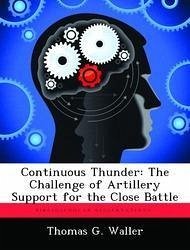This study examines the U.S. Army Field Artillery's current capability to provide close support to maneuver units on the AirLand Battlefield. It first analyses the environment of the modern battlefield and finds that in spite of technological improvements in weapons and command and control capabilities a preponderance of artillery fires will be needed at the small unit level and very close to friendly troops. The whole notion of close support is therefore historically examined in some detail to determine what close support means today and what precise demands it places on the field artillery system. From there the study goes on to examine the field artillery structure in the heavy division to determine its capability to provide the necessary support. A major conclusion is that if the division battle is to be won, then the priority of fire support effort must be focused on actions that will take place within 300 meters of friendly positions. Close support fires must be immediately responsive to units in contact. They must be closely integrated with all other means of fire support and delivered with finesse and precision as part of the overall scheme of maneuver. The study also concludes that the current artillery structure is ill-prepared to provide such close support. Field artillery organization, equipment, doctrine, and conceptual thinking leans toward efficiency in target destruction, not toward wedding fire support to maneuver requirements. It appears that within the fire support community the balance between firepower and maneuver is precarious at best.
Bitte wählen Sie Ihr Anliegen aus.
Rechnungen
Retourenschein anfordern
Bestellstatus
Storno








